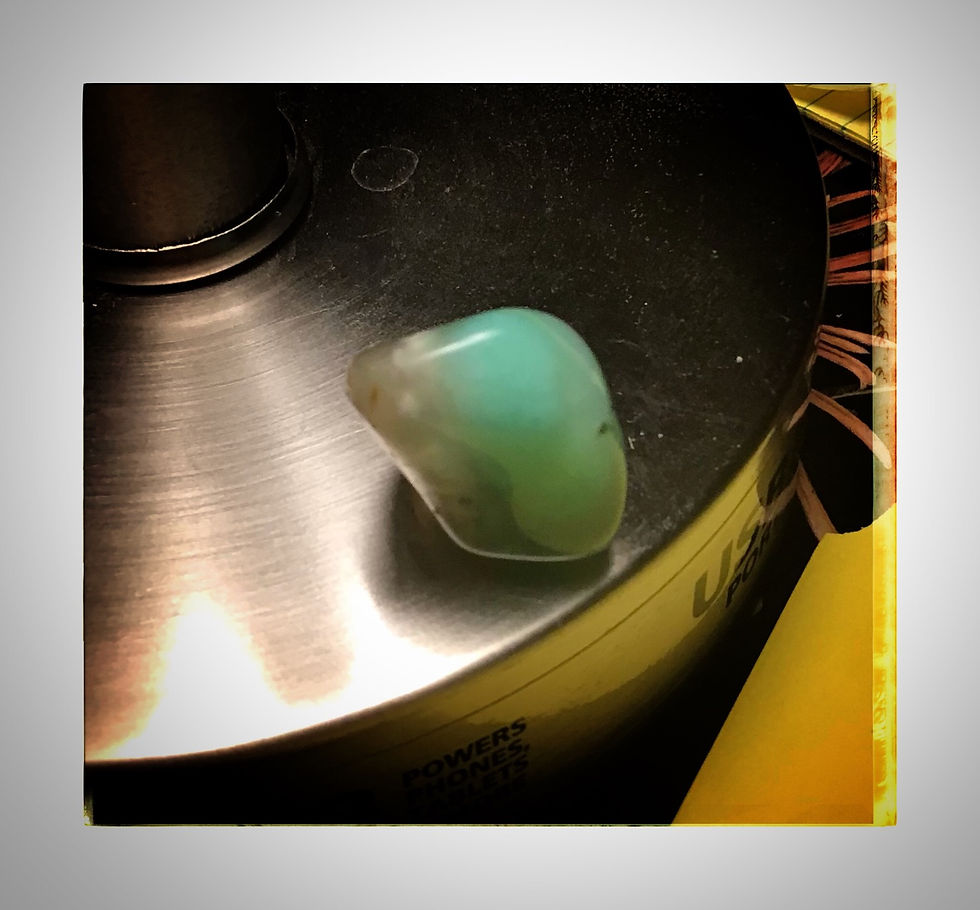The Strange Story of Chrysoprase
- Arthur Chadbourne
- Sep 5, 2021
- 2 min read
Article 13
October 4, 2020
September 3, 2021

The chrysoprase is Greek for "golden”, chrysos, and “leek", praso, in reference to its pale green color which ranges to apple-green owing its latter color to oxides of nickel. It's a chalcedony silicate that fades after long exposures to sunlight; however, by dipping chrysoprase in nickel nitrate, the color is restored. Chrysoprase was identified by Swedish theologian Emanuel Swedenborg as NOFEK, a foundation stone of New Jerusalem. This means Moses set it in the Breastplate of Aaron. For contrast, the appendix of the 1967 translation of the Book Of Minerals claims chrysoprase was worn by Alexander the Great returning from battle in India. Furthermore, while swimming in the Euphrates, according to the legend, a serpent swallowed the stone taking its power from the king. Albertus Magnus had stated in the Book Of Minerals that the talisman worn by Alexander the Great on his belt was made of pyrophilus. Even further research concerning the Book Of Minerals has found prassus or prasius to be the matrix of smaragdus or emerald. The matrix was believed to be where the crystal was formed. While onyx was used to make the Ptolemy cameos such as those mentioned in the Book Of Minerals, rumors on the internet say both Greeks and Romans used chrysoprase for cameos and intaglios of their own. Their validity has yet to be seen. Also, the Egyptians are said to inlay lapis lazuli with chrysoprase. For those with Cancer in their chart, chrysoprase is one lucky stone. One of its virtues is the ability to remove uneasiness protecting its bearer from bad dreams and the influence of demons. Chrysoprase was imparted with cheerfulness at the end of the myth of the Green Jewel of the Pharaohs. An ancient source recommended making drinking cups of this gemstone because of its abundance. Once given as a gift, other warm wishes include the relief from greed, assiduity in good work, success in new business, and assurance of true, faithful friends


Albert Magnus (1193-1280) was instructed in the writings of Aristotle before taking-on orders. He became a Dominican about the year 1223 and studied theology. As a master of theology, he was able to become a professor at the University of Paris where Thomas Aquinas studied under him. Of the many topics that were included in Albert Magnus’s writings; astrology, mineralogy, and alchemy were part of a corpus on natural sciences. For the most part, he became known as a magician after his death for his study of alchemy.
Emanuel Swedenborg (1688-1772) was a pluralistic theologian best known for his spiritual writing, Heaven And Hell. His scientific ideas attempted to bridge the physical and spiritual worlds by empirical experience. His most critical work in theology was presented as “the theory of correspondences” interpreting nuances of the Bible as meaningful.





Comments